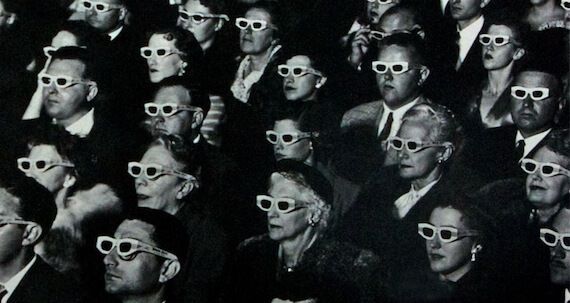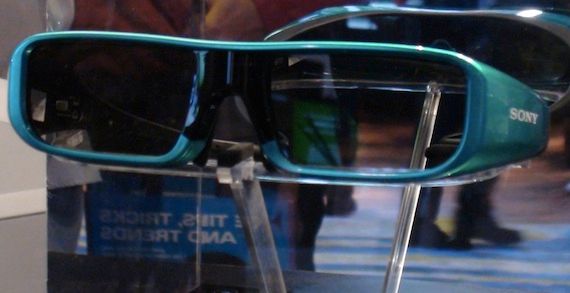The success of James Cameron's Avatar has undeniably changed the way mainstream entertainment consumers view 3D - moving the medium from niche applications (mostly horror and children's movies) to a whole new level of immersion altogether.
Where previous 3D endeavors were built around the notion of constantly reminding the viewer that they were seeing something in 3D, i.e. explosions flinging debris into the face of the audience, Avatar elected to present viewers with a straight-forward experience that simply looked incredible in 3D. There are very few moments in Avatar that stuck out as overt attempts to remind the audience how cool the 3D experience was; instead, these moments simply utilized the technology to further immerse the viewer in the world of Pandora.
But what does this newly fashioned 3D experience mean for gamers (and entertainment lovers in general)?
At the beginning of the month, during Sony's CES press conference, the company unveiled a plan to make an aggressive push to incorporate 3D technology in many of their upcoming product lines, in an attempt to position themselves as "an undisputed global leader in 3D." While the technology is certainly impressive, and quieted a lot of dissenters that felt 3D home theatre tech couldn't satisfy consumers who had grown accustom to HD visuals, Sony's 3D TVs still require the use of the "shutter glasses" which make the effect possible. Sony has yet to reveal the cost of the glasses but most industry estimates put their price point between $200-$400 a piece at launch.
The necessity for the glasses inherently changes how we interact with our home theatre, games, etc. ESPN 3D is a great notion, but watching Sunday football - what used to be a simple social gathering, where the biggest concern was deciding who would be picking up the pizza bill, would now have potentially expensive hurdles for participation.
Everyone would need a pair of the costly shutter glasses to enjoy the action. Also, any quasi-spectators who might be busy preparing buffalo chicken wings for the group, and can't focus their attention solely on the display would no longer have the luxury of sneaking peaks at the action - not to mention that anyone with astigmatism or other eye problems might not even be able to see the 3D effects. The result - something that was once an unbiased social event could instead become an isolating one.
Similar to 3D, over the course of the last decade video games have begun to break free of their niche market - enticing casual consumers back down piranha pipes and into the fields of Hyrule. Titles have become more cinematic, the notion of onlookers (friends and significant others) actually watching someone play through a single campaign for hours has become more common. Common enough that Sony made a commercial about it.
httpv://www.youtube.com/watch?v=kaVsmnpEtE0
But the difference between the reemergence of 3D and that of video games, though they are both improved evolutions of their predecessors, is that one has re-invigorated consumers with the ability to engage with others, through online gameplay and vibrant console communities such as Xbox Live, while the other promises an immersive but isolating experience.
Previous 3D gaming experiences have been hampered by the same hurdles the modern 3D tech is already facing. Nintendo's Virtual Boy, was a colossal failure for the company for numerous reasons but two of the most often noted were the cost of the device ($180 at its launch in 1995) as well as the awkward display set, which allowed one user to wear a 1.5lb display, with absolutely no spectator mode, in order to enjoy "true 3D graphics."
Certainly, a great 3D single player experience wouldn't be a bad thing. Anyone can certainly understand the appeal of sitting down popping on a pair of shutter glasses and hopping online to play Call of Duty: Modern Warfare 3D - but the problem is, that for all the energy behind the current 3D boom, for most customers, it'll be expensive to implement which means game developers will not view implementing immersive 3D tech (the kind we saw in Avatar) as a priority for their titles.
Instead, developers will simply tack half-hearted 3D tech into titles and the industry will be flooded with shuffle-ware akin to the current motion controller trend - most of which are tacked together apps intended for consumers who don't know better.
Ironically, there's already an example of a half-hearted game with 3D tech on the market, Avatar: The Game - a typical movie tie-in title with lackluster mechanics but features 3D gameplay for consumers who already have 3D capable displays. In then end, most consumers agree, Ubisoft should have spent more time on the actual game and less on building sequences around the notion that a lucky few will get to take it for a spin in 3D. The whole notion of convention over quality flies in the face of what made Avatar (the movie) such a great experience.
Despite all the buzz about 3D tech, the feature will likely go mostly unsupported by game developers, at least for a while - aside from patched on 3D display updates such as recent LittleBigPlanet 3D demo. These updates aren't fully imagined experiments in game design, rather they merely add improved depth to the game's display - not actually taking advantage of the tech in any meaningful way.
3D tech will undoubtedly become a staple for videophiles with money to burn, but for most people, it's going to be a hard sell - especially considering a lot of consumers just made the switch to HD sets. As an added feature on a similarly priced-television 3D tech would certainly be a selling point but shelling out a lot of extra money solely for a 3D enable set will be more difficult to justify in most houses across America - who, when it comes to sales, are still the meat and potatoes of the electronics market.
In the end, the whole direction of 3D tech, as it pertains to gaming and video-entertainment in general, could easily be summarized by Engadget's Nilay Patel, during the CES headline performance - a Taylor Swift concert where the singer appeared live on stage and the audience was asked to put on 3D glasses in order to demo a 3D projection of the singer displayed behind her live and three-dimensional body. "The projected 3D isn't actually all that great -- it's nice, but it's not worth wearing silly glasses for. Particularly when the real Taylor Swift is right in front of you." Patel added, "The sparkles on her guitar do 'pop,' though."
What do you think of the possibility of 3D gaming? How would you like to see the feature implemented?



